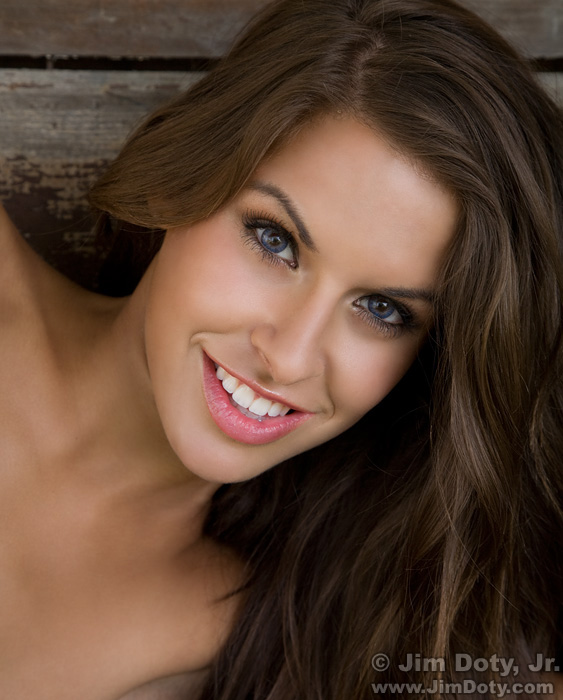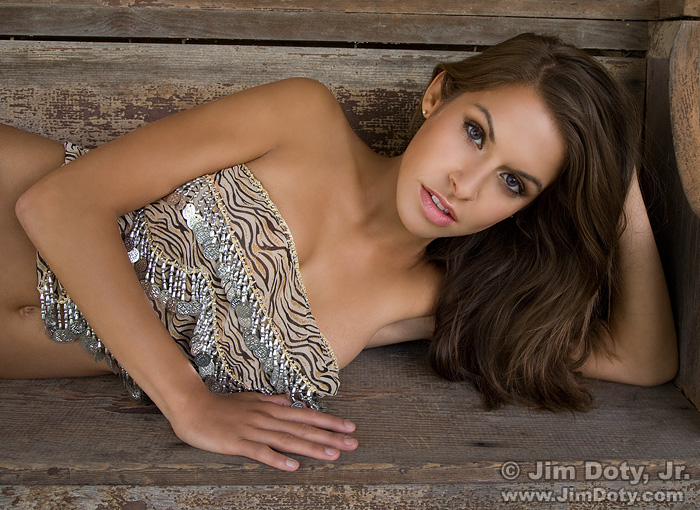On a sunny day, a covered porch can be ideal for portrait photography, especially if it is facing south. A covered porch gives you nice soft light which is ideal for portraits.
If a porch faces south the color temperature of the light will be closer to neutral, which is also good for portraits. If a porch faces north, you get cooler, less intense light which can still be very workable. You will need to use a higher ISO to get a reasonable shutter speed, and you will have to do more compensation, either in the camera or on your computer, to compensate for the cooler, bluer light.
I have the best of both worlds, a covered front porch that faces south, so I use it regularly for portraits on bright sunny days. A lot of sunlight is reflected on to the porch in the middle of the day which makes for soft light, and all of that reflected sunlight is what keeps the color temperature of the light close to neutral. Early or late in the day, the color temperature of the light will be much warmer. There is also an old, rustic church pew on my porch which makes for a nice prop.
For the photos above and below, the model was semi-reclined on the pew, a nice pose for a young woman. I metered her skin and added one half stop of light to what the camera meter said (“plus 1/2 stop” of exposure compensation) so her skin would be medium-light in tone but still nicely saturated. To render her skin with a lighter tonal value, but with less saturation, I would have used a full “plus 1 stop” of exposure compensation. With some skillful metering, you can give skin a variety of tonalities to create the kind of image you want to have.  If you leave your camera on auto exposure, the camera is taking that artistic decision away from you.
A focal length of 80 mm gave me a pleasing perspective for her face. If you move in close to your subject to fill the frame and use a wider angle lens, you will distort the face by enlarging the nose in proportion to the rest of the face. That’s why a lot of photographers use a 70 mm or longer focal length when doing tight portraits. People look good that way. On the other hand, if your mission is to distort the face for an unusual look, by all means use a wide angle lens and move in close.
For the photo below I was farther away with a 28mm focal length, so distortion wasn’t a problem. To be technically correct, it isn’t the focal length that creates distortion, it is how close you get to your subject with the camera. Wide angle lens aren’t a problem unless you move in really close to fill the frame with a person’s face.
An aperture of f/8 gave me enough depth of field for both photos. I bumped the ISO up to 200 to get a shutter speed of 1/40 second, plenty fast enough for a non-moving subject.
The light on the porch was just a little cooler than “neutral daylight” and my camera was set to the “daylight” white balance setting. I made a minor change in the color temperature when I opened the RAW file with Adobe Camera Raw (ACR). On my back porch (which faces north), the light is much cooler on a sunny day since it comes mostly from the blue sky with a much lower percentage of reflected sunlight, so I set the white balance setting on my camera to “shade” and tweak the color balance when I open the RAW file with ACR.
If you have a covered porch, try turning it into a sunny day studio. You can do some very nice portraits.
Just one caution. On a covered south facing porch, the reflected sunlight can be bright even to make some people squint. Squinting doesn’t look good in a portrait. If you have a “squinter”, you have some options. Have them close their eyes, and then tell them to “pop” them open just before you click the shutter. If that doesn’t work, another option is to give up on the south facing porch when working with that person, at least in the middle of the day. Try shooting earlier or later in the day when the sunlight isn’t so intense.
You can find a more information on portrait photography, posing men and women, controlling perspective, using light, working with the color temperature of the light, white balance settings, depth of field, exposure compensation and choosing skin tones in my book, Digital Photography Exposure for Dummies. You can learn more about it here and buy it at Amazon.com.
Photo Data for both photos: Canon 5D. Canon EF 24-105mm f/4 lens. f/8, 1/40 second, ISO 200. Upper photo: 80 mm. Lower photo: 28 mm.


